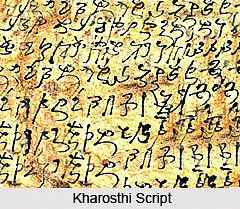Archaeological Sources of Ancient Indian History encompass a wide array of artifacts and remnants unearthed through diligent excavations, allowing historians and archaeologists to piece together the lives, cultures, and practices of ancient Indian societies. These sources include coins, inscriptions, monuments, sculptures, and a plethora of artefacts that collectively contribute to our comprehension of India's storied past. As primary sources of historical information, they illuminate the socio-economic, political, and spiritual dimensions of life in ancient India, offering invaluable insights that traditional textual sources often overlook.
Monuments and Excavations
The rich tapestry of ancient Indian history is vividly illustrated through its architectural monuments. Notably, historians like General Sir Alexander Cunningham and Sir William Jones, associated with the Asiatic Society of Bengal, were significant figures who contributed to the archaeological study of pre-Aryan India. Their efforts paved the way for subsequent excavations across various sites, most notably those of the Indus Valley Civilization. The urban centres of Harappa and Mohenjodaro, discovered by Daya Ram Sahni in 1921, signify a high degree of social organization and urban planning that dates back to approximately 2500 BCE.
The architectural analysis of ancient ruins reveals the sophistication of their builders. Structures such as palaces, stupas, temples, and residential complexes indicate an advanced understanding of urban design and communal spaces. Moreover, these archaeological sites allow historians to estimate population demographics, societal hierarchies, and the religious practices prevalent during various periods. The meticulous study of infrastructure, including drainage systems and public baths, further underscores the technological prowess of the ancient Indian civilizations.

Inscriptions as Historical Records
Inscriptions are among the most critical sources for reconstructing ancient Indian history. These writings, often engraved on stone pillars, copper and bronze plates, and temple walls, serve as an uncorrupted chronicle of events and societal norms. The diversity of languages and scripts found in these inscriptions—ranging from Sanskrit to Prakrit, Tamil, and Kharosthi—reflects the linguistic richness of the subcontinent.
Among the most notable inscriptions are those from the era of Emperor Ashoka, a Mauryan ruler known for his commitment to spreading Buddhism and ethical governance. The Edicts of Ashoka, inscribed on rock and pillars, present a first-hand account of his philosophy and policies, providing profound insights into the social and political climate of his time. Similarly, inscriptions by Harisena, the court poet of Samudragupta, and the Allahabad Prasasti contribute to our understanding of the Gupta period's grandeur, highlighting the interplay of culture, politics, and art. These memorials not only honor individuals but also enshrine events that shape the region's historical trajectory.
The Role of Coins
Coins stand as a significant archaeological source, offering insights into the economic conditions and monetary practices of ancient societies. The origin of various types of coins unearthed from different eras sheds light on trade practices, materials used for currency, and the socio-economic status of different regions. The coinage from Samudragupta's time, for instance, is critical in understanding the Gupta Empire's economic structure.
The inscriptions on coins, often detailing dates and symbolic imagery, play a vital role in establishing a chronological framework for historical events. Additionally, coins from the Indo-Greek and Indo-Parthian eras elucidate the cultural and economic exchanges that occurred between India and neighboring civilizations, providing a broader perspective on the geopolitical dynamics of ancient times.
Paintings and Sculptures
Artistic expressions in the form of paintings and sculptures reveal the aesthetic sensibilities and cultural narratives of ancient India. Rock paintings found in the caves associated with Buddhist and Jain monks depict various scenes from the life of the Buddha and narratives from the Jataka tales. These artistic works not only serve a decorative purpose but also illustrate the philosophical and spiritual beliefs of their creators.
Sculptures found in temples and public spaces demonstrate the evolution of artistic techniques and styles over generations. The detailed craftsmanship not only highlights the artistic innovations of the period but also serves as a medium through which historical events and deities were memorialized. Such artefacts provide a visual context that complements textual and epigraphic sources, enriching our understanding of the social constructs and belief systems of ancient India.
Conclusion
The archaeological sources of ancient Indian history are indispensable in the quest to understand the past. Through careful excavation and analysis, historians and archaeologists have brought to light the intricacies of ancient societies, revealing their achievements, struggles, and daily lives. The monuments, inscriptions, coins, paintings, and sculptures unearthed from the depths of the earth chronicle a rich heritage that continues to influence modern India. As research progresses, these artifacts will invariably yield further insights, underscoring the importance of archaeology in the ongoing journey to reconstruct the multifaceted history of ancient India.
